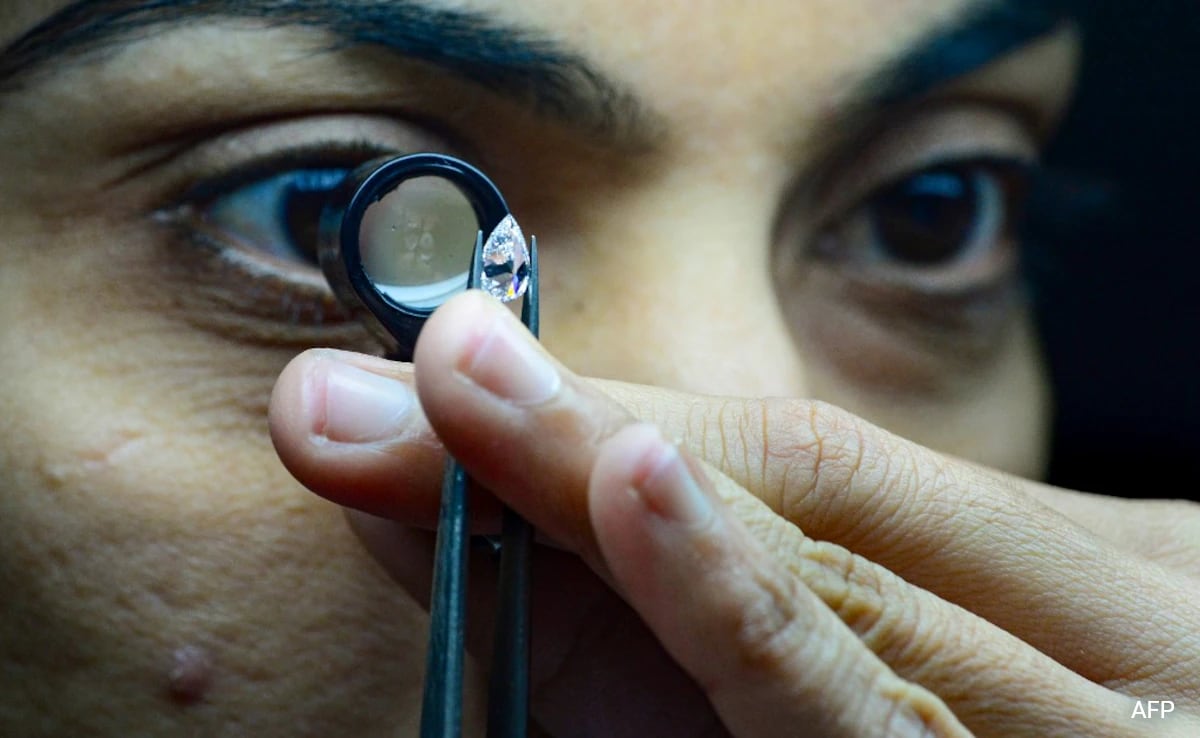
Man-made gems are reshaping the $89 billion global diamond jewelery market.
face:
Sparkling diamonds sparkle just as well but there are key differences: mined natural gems are over a billion years old, while lab-grown rocks are newer and cost less than half the price.
Man-made gems are reshaping the $89 billion global diamond jewelry market, especially in the west Indian city of Surat, where 90 percent of the world’s diamonds are cut and polished.
In Smit Patel’s gleaming laboratory, technicians drop “seed” pieces of crystal diamond into reactors that mimic the extreme pressure beneath the ground.
“Once the customer sees it in person, they’re sold. I believe that’s the future,” said Patel, director of Greenlab Diamonds and the third generation of his family to trade diamonds.
From seed to ring-ready gems, it takes his team less than eight weeks to produce a diamond that is almost indistinguishable from a mined gem.
“It’s the same product, same chemistry, same optical properties,” Patel said.
gas, heat, pressure
According to the latest industry data, lab-grown diamond exports from India are set to triple in value between 2019 and 2022, while export volumes increased by 25 per cent between April and October 2023, up from 15 per cent in the same period a year ago. The percentage was.
“We have grown 400 percent in volume year on year,” Patel told AFP.
In laboratories like Patel’s, reactors are filled with carbon-rich gases like methane and the crystals grow under heat and pressure.
The rough diamonds are then transported to another facility where hundreds of workers design, cut and polish the stones.
The global market share by value of lab-grown gems is expected to rise from 3.5 percent in 2018 to 18.5 percent in 2023 and exceed 20 percent this year, New York-based industry analyst Paul Zimnisky told AFP.
This has increased the pressure on an industry already struggling with geopolitical turmoil and declining demand.
‘clean’ stone
Machine-made diamonds were first developed in the early 1950s, but it took a technological leap forward to make the process commercially viable less than a decade ago.
Manufacturers claim their gems come at a low carbon cost, although there are questions about whether the energy-intensive process is better for the environment.
Patel said his lab uses solar power from the local grid, although other labs draw power from carbon-heavy sources.
And while mined gem sellers insist that “conflict diamonds” from war zones are kept off the market through the international Kimberley Process certification scheme, laboratory producers argue that their facilities guarantee a clean record.
Such environmental and humanitarian claims have helped make lab-grown stones a popular choice for engagement rings.
According to industry analyst Edahan Golan, in February 2023, 17 percent of diamond engagement rings sold in the United States – the world’s largest consumer of natural stones – use lab-grown gems.
According to Golan’s assessment, it is now 36 percent.
This is partly made possible by hundreds of companies in China and India, which are the largest producers of man-made stones.
‘The perfect storm’
According to the Gem and Jewelery Export Promotion Council of India (GJEPC), Indian lab diamond manufacturers exported 4.04 million carats between April and October 2023, a growth of 42 per cent year-on-year.
In contrast, natural diamond companies in India reported a decline of more than 25 percent to 11.3 million carats in the same period.
While sales of natural diamonds surged during the COVID-19 pandemic as affluent shoppers sought to brighten up the lockdown with luxury shopping, demand declined as economies reopened.
Top companies were left with expensive excess stock.
Ajesh Mehta of D.Navinchandra Exports, whose group is one of the authorized buyers or “sightholders” of global diamond giant De Beers Group, said it was the worst recession in his 30-year career.
“This is a completely different kind of reduction in demand,” Mehta told AFP. “Everything came together like a perfect storm.”
Other factors, besides competition from lab-grown rivals, include slowing economic growth in the all-important US and China markets, as well as oversupply and sanctions against Russian rough-cut diamonds.
India’s natural diamond industry was forced to impose a rare voluntary import ban on rough diamonds in October.
“We had to hit the reset button,” Mehta said. “Otherwise people will get scared.”
At least five Indian sightings told AFP that De Beers Group had cut prices by 10 to 25 percent for different categories of diamonds in its first sale of the year, when buyers restocked after the US holiday season. We do.
‘No monopoly’
Lab-grown industry also has its own problems.
Supply has skyrocketed and prices have fallen sharply, with wholesale prices falling 58 percent in 2023 alone, according to Golan’s analysis.
The price of a one-carat polished stone of low quality is set to fall from $2,400 in 2022 to just over $1,000 in 2023, retailers in Surat told AFP.
WD Lab Grown Diamonds, the second-largest U.S. producer of man-made stones, filed for bankruptcy in October.
But Patel argues that falling prices will increase demand.
“We knew prices would be low because there is no monopoly in this industry,” he said.
Customers at a jewelery showroom in Mumbai, India’s commercial capital, seemed to agree.
“A mined diamond will be five times more expensive,” said Lekha Prabhakar, 29.
“If you want something you want to wear every day…a lab-grown diamond works. I really like that.”
(Except for the headline, this story has not been edited by NDTV staff and is published from a syndicated feed.)
Follow us on Google news ,Twitter , and Join Whatsapp Group of thelocalreport.in













